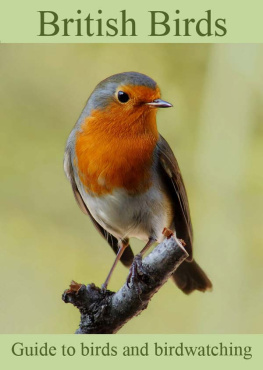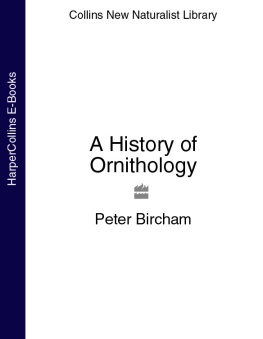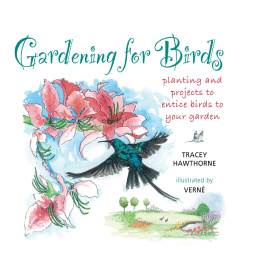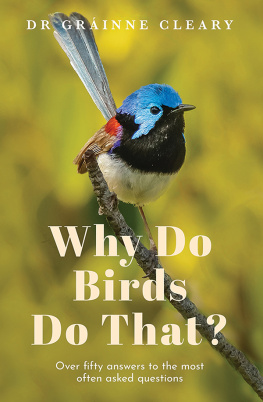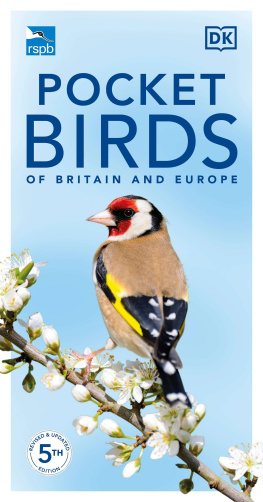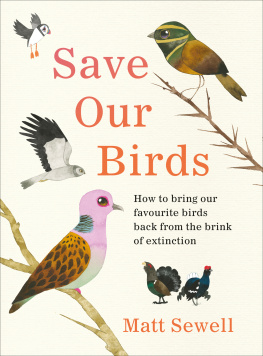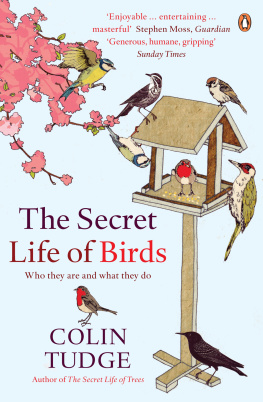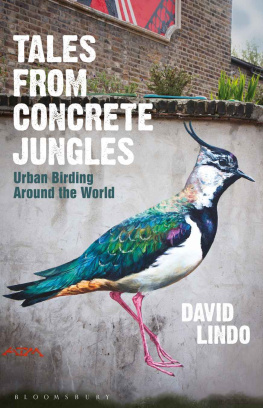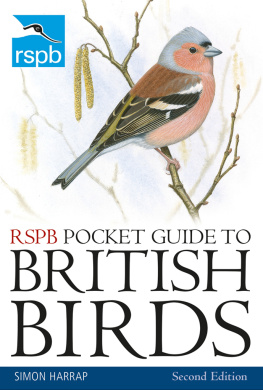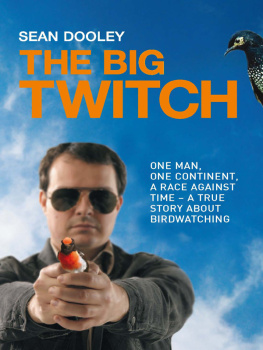British Birds
The definitive guide to birds and bird watching

Contents

Chapter 1
The Joys of Twitching
Why do we watch birds? Getting on for three million of us do in Britain, at least occasionally, every year. For some of us it means a bird table outside the kitchen window, for others a regular visit to the local bird sanctuary. For the serious twitchers amongst us, it involves journeys the length and breadth of the country and beyond in search of some elusive tick of a rare sighting.
Perhaps its because we envy their ability to fly. Birds are all around us, everywhere, whether we live in the town or the country, on the coast or inland. We share our environment with them. And yet they live in a quite different world too, a world up there made possible by flight and by ancient instinctive patterns of breeding and migration, a world still regulated by the climate and the seasons from which in the modern age we have insulated ourselves. Perhaps this is why they appear in so many tales of primitive folklore and legend they are not bound by the same constraints as us.

If we envy their flight, we certainly admire their plumage for its infinite complexity and variety of pattern. In Britain alone it is possible to see over 400 different species of bird, amongst which even the commonest little brown bird, the House Sparrow, has graceful and subtle markings. We can be as pleased to see the Sparrow in Britain as we are the Heron or the Kestrel, the Woodpecker or the Robin all beautiful birds.

There is beauty and pattern too in the songs of the birds. From the conversational Crow to the angelic Skylark, birdsong contains music of great variety and inspiration. The dawn chorus, the lone Mistle Thrush, even the raucous shouting of the rookery, all have the power to intrigue and lift our spirits.
Whatever your reason for watching birds scientific, aesthetic or just plain fun they are there for the watching, wherever you are. Enjoy them!
Chapter 2
How to Use this Book
Birds are arranged in this book within the relevant section. The sections reflect the general habitats in which you are most likely to see each bird, but it should be borne in mind that many birds can be seen in different habitats at different times of the year.
The book is designed as a field companion and offers accurate and useful descriptions of the 72 featured birds, and each contains further details and background information.
The book aims particularly to help the birdwatcher avoid common mistakes of wrongful identification, with notes for each bird on similar-looking species and clear references in brackets for example Cormorant (Coastal 12) to the habitat section and number of the look-alike for easy comparison.
There is a further Quick Reference section at the end of the book with simple guides for sorting out three frequent sources of confusion the Big Black Birds, the Little Brown Birds, and the Gulls.

Chapter 3
The Country Habitat
From Cornish moor to the wetlands of eastern England, from the gentle South Downs to the jagged Cairngorms, there exists in Britains countryside a remarkable diversity of natural environment. Dense forestry and scrubby heathland, open water and rocky gorge, cultivated field and fragile marsh all offer their own solutions as breeding and feeding territories for our birdlife.
Some birds thrive in windy places; others need slow-flowing water; others still wait for the hand and plough of man to turn the soil for them. Some take their prey from remote lakes; others eat insects in ancient woodland. Each area provides a particular combination of weather and shelter, sustaining an interdependent community of plant and animal life; and although individual species may occur elsewhere, every local eco-system is irreplaceably unique.
The country habitat defines the variety of our bird population just as surely as it does our human one. Like us, birds have adapted to specific resources and climate, or migrated to one which suited their needs.
Our countryside plays host to a colourful mixture of resident and migrant species, whether they are Great Crested Grebes escaping the harsh eastern European winter, or Swallows fleeing the height of an African summer, or indigenous Curlews moving between marsh and moor within our borders.

Britain has more than 300 regularly inhabitant birds, with half as many again appearing as occasional or accidental visitors. Of this total, around 40 are in forms unique to our islands. So for example our Robin is biologically distinct from the other 7 races of Robin to be found in the world. And although our common Song Thrush Turdus philomelos is also common in the rest of Europe, a sub-species Turdus philomelos hebridensis is only found in the Outer Hebrides of Scotland.
Such wonderful biodiversity within our small island means that every part of the countryside has something special to offer the birdwatcher.
Rook
Rooks are very gregarious birds, congregating in large groups of nests (rookeries), a familiar sight in tall trees all over Britain, where their apparent bickering with and stealing from their neighbours is accompanied by those hauntingly raucous calls.
Country lore holds that the higher the Rooks think it safe to build the nests in their treetop colonies, the better the summer is going to be. Curiously, colonies of seals are also known as rookeries, perhaps because of the similarities in denseness of population and the harsh barking din that both creatures make!

In Ireland, if a Rook was seen to peer down a chimney, it warned of a coming death in the household. This may be connected with the old belief that every Rook had three drops of the devils blood in it!
In fact Rooks are very likeable birds, intelligent and sociable. Although they cause some damage to young crops, they are not the threat to young livestock that for example the Carrion Crow sometimes is.
CORVUS FRUGILEGUS
Appearance: large black bird. Black all over, except for a patch of bare pale off-white skin at the base of the bill, which is quite thin and straight; slightly angled forehead. Close up, the black of the adult bird has a purple sheen to it. Thigh feathers of both adults and juveniles are long and shaggy, giving them a baggy-trousered look.
Size: 45cm (18).
Voice: drawn-out caw, as well as other shorter croaks.
Habitat: lowland farming country, in rows of trees, copses, and woodland

